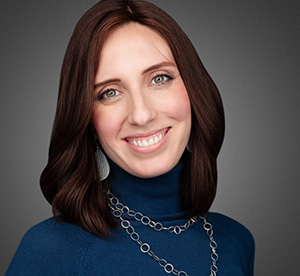Picture Perfect

There’s a world of everything for everyone out there, but nothing for you. So, when marketing agencies create ads that talk to you — that speak your language — you’re a lot more likely to open your wallet

With frum advertisers becoming ever-more sophisticated when it comes to branding, the newest technique in the industry is the “frum photoshoot.” Photoshopped peyos aside, which heimishe yungerman would agree to be a model for a chassidish men’s clothing line, and what kind of mother is thrilled to push her adorable toddler in front of a camera for a onesies ad?
Raise your hand if you remember the ads with a fancy guy in a suit with a badly photoshopped yarmulke perched on his head. Yeah, those ads are long gone. My friend, a graphic artist, used to gripe about them all the time, but she hasn’t done that in a while. Frum marketing has upped its game in the past years, going from gangly tween to cool teenager in an extreme makeover kind of way. The pictures you see of the gorgeous chassidish kid with gekrazeled peyos hawking European shoes, or chocolate — he’s real. But you knew that intuitively, because you’ve never seen fake peyos, or photshopped beard or yarmulke that actually passed muster to anyone frum. Today the frum world has marketing agencies, with creative directors and photographers and models — yes, models — too.
Some will decry this evolution, pining for the simpler days when businesses and nonprofits didn’t need sophisticated branding to attract customers. But the move toward branding has brought real rewards. There’s psychology behind it, and it works, bringing in more business for food and clothing and furniture companies, and more funding for your favorite chesed organization too.
A fixture in the new marketing playing field is what I’ve feebly dubbed the frum photoshoot. It’s still relatively new, only single-digit years old, but fascinating. Shlome Steinmetz, the CEO and founder of the frum marketing agency PivotGroup, tells me the shift started around eight years ago. He remembers working on an ad for the Toshea (Eitzah) nonprofit helpline when they came up with the idea of a custom photoshoot. Their biggest hurdle was finding models. No one would agree to be photographed commercially. In the end they found kids in Israel to pose for American ads, but the organization had to sign all kinds of confidentiality statements, guaranteeing that the photos wouldn’t be used elsewhere and the kids’ names wouldn’t be leaked. That ad campaign was a huge success, and suddenly real frum people in ads was not a crazy innovation anymore but an idea whose time had come.
Representation. Yes, it’s a hot word these days. But let’s skip the politics and talk about the psychology of representation. When a person feels seen and understood, they are more likely to respond to requests and overtures, and marketing companies rely on that awareness.
Think of yourself as the consumer for a second. How many times have you doubted that companies understood your needs, that their products were intended for a person like you? These doubts make you less likely to engage and purchase. Finances aside, as the consumer, you feel left out. There’s a world of everything for everyone out there, but nothing for you. So, when marketing agencies create ads that talk to you — that speak your language — you’re a lot more likely to open your wallet.
Yes, Little People cost half the price of Mitzvah Kinder, but having a shul set is priceless; it even comes with a mechitzah. Turning the Little People schoolhouse swing set — into an aron kodesh looks sad, and c’mon are you really just going to use a Lego brick as a sefer Torah?
Now imagine if the ad truly reflects your reality. Sruly Rosenberg, a photographer who has a commercial studio in Brooklyn, remembers shooting an ad for a clothing company many years back. As a favor, his nephew served as the model. The response to the ad was incredible. People were so appreciative to see a child who looked like their own. Finally, they could see themselves as the target audience. And guess who sold out.
Representation segmentation goes so far, says Shlome Steinmetz, that his company will place ads featuring Satmar figures in Boro Publications and Five Towns residents in Five Towns publications, so the audience will see people who look like them and relate.
Representation is real. We crave and respond to it; we feel loved and understood and we then open our minds and wallets. Can you really fault businesses and marketing agencies for the shift? Really, what took them so long?
So, what goes into those glossy ads crowding our magazines and popping up on our screens?
Marketers from Ptex Group, DCNY , and Pivot, and two photographers share the basic process with me. It starts with a client approaching an agency, or a marketer, to create an ad campaign. Next is pinpointing the goal of the ad. Then the team plans the creative vision with mood boards and mock-ups. Once they know how the ad should look, there’s recruiting models, conducting the photoshoot, editing the photos, creating the ad, and finally going live with it.
I’m going to skip the planning and jump to the part that interests most people, the model part. After talking to many people, there’s a lot that’s the same and there’s a little that’s different.
Malky Klein from Ptex says that finding heimish models is difficult — and be careful with the word model — it has negative connotations. Everyone else though seems to think that it used to be harder and people are a lot more willing today. There’s even a frum model broker, Mrs. Davidowitz, who has a group of “stam regular kids” who are willing to model. Most of the time it’s through casting calls on social media (You’ve probably seen them “Model call: Looking for boy size 5, send pic”).
While it may be easier to find the kids these days, it can still be difficult to have them show up, there are always murmurs of ayin hara. People will commit and then the babbe hears about it, and forbids it. Dini Rotenberg of Dini’s Photography, who styles and shoots lookbooks for several brands, shared a time a mother pulled out the day before. “Better then than later,” she says. “It would have been a disaster if she had second thoughts after I’d already done the shoot — if the kid tripped next week, it would have been my fault.”
Ayin hara aside, what about privacy? I don’t really post pictures of my kids, not b’shita, but more because I’m honest enough to admit that no one but my mother and mother-in-law care to see pictures of my kids. But I understand other people’s privacy concerns. Is there a specific “type” of parent who’s more likely to sign up their kid as a model? And legally, who owns the pictures and what are their rights?
Dini says that, legally, models must sign releases for their photos to be used. Once the release is signed, the owner, generally the business funding the ad, is free to do whatever they want with the image, and manipulate it in any way they choose. That necessitates a certain degree of trust that not every parent would have. Speaking to the mothers of kid models though, it seems releases are not standard, and most photoshoots go on without them. “It’s all very heimish and yeshivish,” one mother said. Her kids have modeled for 7AM, Zebra, Kipp, and RB Baby, among others. There were only a few instances in which she signed releases.
Curious how the process actually works, when I saw an old camper post “looking for models” of a particular age and size, I messaged and asked for details. She said it was for her cousin who was starting a baby undershirt business with a friend, and put me in touch with Leahle D. and Eta T. who just founded AmieChild, a kids’ undershirt brand.
I wanted to know, did people respond? Did a lot of parents send in photos of their kids as possible models? What kind of babies were they looking for? Yes, yes, and, “chubby ones who will fill out an undershirt.” Got it.
Two weeks later I knocked on the door of a small house in Lakewood and headed to the basement, where the photoshoot was taking place. Space was limited but well curated, with lighting, faux wood floors for the shoots, and dressers filled with accessories. The photographer, Shima Spira, does both brand and newborn photography, so she’s stocked with tutus and muslin swaddles, tiny wooden carriages, and other forms of whimsy, which were perfect for an undershirt shoot as well.
There was food in the corner — good food too, a platter of wraps and pastries. But everyone seemed focused on the shoot instead. I watched the first kid, a cute girl with little half-pigtails on top of her head, as she posed for the camera. (If you can call what a two-year-old does by being themselves posing.) She sat, she touched the displays, she smiled, she whined. She was a kid. Granted, she was a seasoned model, having already modeled for Lil Leggs, Petit Clair, Adora, and Tottini. She’s also likely the only frum kid signed with agency TERRA Casting.
Leahle and Eta were surrounded by boxes of undershirts, and fretting over sizing for the models (trick: they size down for the pictures, so the undershirt is as snug and crease free as possible). Eta sat on the floor ironing out the creases that developed from being folded in packaging. Later Leahle went outside to spray-paint a bundle of baby’s breath pink to match the mood.
A bajillion details! I asked Dini, Shlome, and Malky about whose job it is to makes sure all the i’s are dotted and t’s crossed. So like most things, they tell me, it comes down to budget. Is there a stylist involved or just the marketer? Are the models wearing their own clothes or is the wardrobe being purchased? Shlome said they had to buy robes once for a kid riding on a camel. All those extra details and staff can increase the price.
Back in the basement, the next kid showed up, a cutie of 8 months old who’s already modeled for two other companies. He had blond hair, blue eyes, droopy jowls, and his hair combed into a tiny faux mohawk. He cried at first, because that’s what babies do when plopped in strange places. But slowly, with his mother coaxing, he sat like a real chiller and eventually started smiling. I don’t know how picture-pretty little kids come out sitting around in undershirts, but the process seems to work. The two kids interact, tepidly at first, then with more warmth for some cute shots.
Shlome Steinmetz shared that during a Bonei Olam shoot, the two kid models were being uncooperative at different times, so, in the end, the ad was a photoshopped picture of the two kids looking angelic. And that’s the beauty of modern photography. Dini put it a little differently. “I like to get two models of the same size, so if one baby is being uncooperative, I can just swap them out for the other kid.” She paused and said wryly, “You can’t do that in a family shoot.”
The kids at the photoshoot were doing okay, and I figured I had gotten a good read on which types of mothers sign up for this. Then two more moms showed up and the only thing they had in common were cute kids. I’ll be honest. I made assumptions. I thought I knew the type of mother who would have her kids model: young, part of the social-media generation, completely comfortable with cameras and pictures. But shocker, I was wrong. Any type of person can sign up their kid as a model: younger, older, with-it, or not. Sometimes they’re found through casting channels of WhatsApp and Instagram, and sometimes it’s a favor to a friend who’s starting a business, or their child benefited from an organization and they have hakaras hatov.
And for the yentish questions, how much does modeling pay? In the frum world, for most jobs — nil. Models aren’t paid. They’ll get photos from the shoot (kid photography is expensive so that’s nothing to sneeze at), and they’ll often get free products. In this case, the models were getting both products and pictures.
Shlome says if you’re a Jewish celebrity, you might be able to command some decent money, meaning a few thousand. He also says models get around $200, but I didn’t hear any numbers like that from talking to the mothers of kid models. Malky said that agency models can get $200–$300 for a five-to-six-hour shoot, but there’s a difference between frum, word-of-mouth models and order-to-specification agency models.
The majority of frum models and their mothers are just in it for the fun. They’ve heard from their great-aunt and the neighbors and their friends how beautiful their child is — she could be a model — so when the opportunity knocked, they jumped (wait don’t all people say this about everyone’s kids to be nice?). Most mothers are not working, so this is something to do with their kids — get some cute products, and even better, get really cute pictures.
It’s not a perfect relationship though. One mother, we’ll call her Chava, has both a son and daughter who’ve modeled, and she wished the companies would respect the models more. If they’re not paid, companies should at least be generous with the compensation: the gift card should be substantial, don’t limit the choice of pictures she can have, make her feel like a person. Her most positive experience was with a non-Jewish brand, who answers all her emails promptly and is generous with free merchandise.
But what really is the difference between an agency model and a frum kid, and why would a brand choose one over the other?
Dini explained it best. “When you have a specific size and look you’re going for, you can just go to the agency’s website, click blonde hair, blue eyes, girl, choose height and other stuff, and you’ll have lists of kids to pick from. It’s just so easy to get exactly what you’re looking for.” With the come-one-come-all casting calls in the frum world, there’s no guarantee a company will get what they’re looking for.
There’s also the little thing called money; frum models are cheaper. But Dini says, “You can always find people who will work for lower rates, even professionals. The market for models is oversaturated.”
Well, there you go, supply and demand 101.
Dini says that there is no difference in the quality of the work between a professional model and any cute kid. “It’s not a skill,” she says, “it’s just confidence.” The camera loves people with confidence; it radiates through the lens. (That explains a lot about me hating every picture of myself.) In an interesting aside, Dini shared a time a model was shy and self-conscious. Dini approached the model and told her, “It’s totally okay to be shy, just be confident in your shyness, it’s a different vibe.” The model listened and the photoshoot was a great success.
Sruly feels differently. He says professional models are better at posing and don’t need as much coaching. All things considered though, he’d prefer working with a frum model — “it’s more heimish and geshmak.”
It’s fascinating, the idea of taking a stranger into an artificial environment and having them perform to sell a product that will resonate with other strangers. How do the photographers and marketers get the pictures they imagine to become reality? They all used the same word: Vibe. I felt like I was back in the ’60s.
When the experts talk about “vibe,” they’re referring to the feeling the brand is hoping to evoke, as well as the mood on the sets of the photoshoots. A lot of effort is expended to achieve the right one. With kids, you often want the images in the ads to feel upbeat and lively, so at these photoshoots there’s often music pumping, nosh passed around, dancing, anything needed to get the kids playful. But sometimes the marketers want a more intense feeling, and music is used again, while the photographer will often talk to the models to elicit an emotion. “I’ll tell them, ‘Imagine you’re opening your credit card bill.’ ” Sruly gave as an example.
Once the creative director is satisfied with the pictures, the show is over. The client will get around 250 pictures to choose from. The selected photos are then edited, inserted into preplanned ads, and sent to publication and advertising platforms for publishing. The end.
Just kidding. The final question that begs to be asked is: What’s next? What is the future of frum advertising?
There is a consensus on the future of Jewish advertising. Everyone thought the quality of Jewish ads and marketing is on par with the secular world. “I’ve photographed for both, and while the secular and Jewish markets are night and day, when comparing the technical and creative level in advertising and marketing, there’s no difference,” says Dini, who’s shot for Posh Kids and Mocha among others. So whatever trends you see in the secular world, expect to see them in the frum world. Ads tailored for mobile viewing used to be secondary, but mobile compatibility is now a priority as more and more people consume media and ads on their phones. Videos are also being shot in formats compatible with phone viewing, Sruly told me.
The shift is to digital, Shlome insists. Besides the fact that that’s where the people are, companies can easily track click-and-open rates and immediately know the success or failure of their campaign. Print tracking, in contrast, is never exact. There’s also the cost; a full-page ad in a magazine can cost upward of $1,500, while an ad can be placed on a top website or social media outlet for just $400.
“Soo…” I asked the next obvious question, the new elephant in the room. “Is print dead?” Don’t hold your breath: All said no, thanks to Shabbos. Shlome adds that magazine ads have more prestige and are good for branding, more so than ads on social media.
Phew. I still have a job. If not, I can always volunteer my kids to model. It might cover their wardrobe for the season.
(Originally featured in Mishpacha, Issue 839)
Oops! We could not locate your form.













